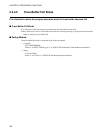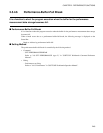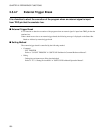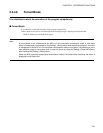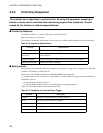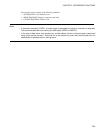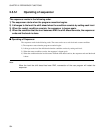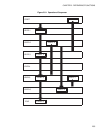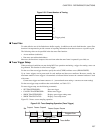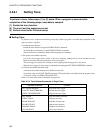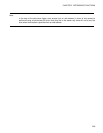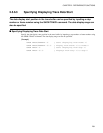
256
CHAPTER 2 DEPENDENCE FUNCTIONS
2.5.6 Real-time Trace
While execution a program, the address, data and status information, and the data
sampled by an external probe can be sampled in machine cycle units and stored in the
trace buffer. This function is called real-time trace.
In-depth analysis of a program execution history can be performed using the data
recorded by real-time trace.
■ Trace Buffer
The data recorded by sampling in machine cycle units, is called a frame.
The trace buffer can store 64K frames (65536). When the enhancing trace board is used, it becomes capacity
for 256M (268,435,456) frame.
Since the trace buffer has a ring structure, when it becomes full, it automatically returns to the start to
overwrite existing data.
■ Trace Data
Data sampled by the trace function is called trace data.
The following data is sampled:
• Branching instruction frame
Branching source address, branching target address, disassemble
• Data frame
Access address, Access data, Access size, Access attribute (read/write), and Bus master (CPU/DMA)
• Special frame
Program stop, Trace start/end, Reset, Loop count, Extended time stamp frame, Data lost
• Difference of execution time with frame immediately before (unit of CPU clock)
■ Frame Number
A number is assigned to each frame of sampled trace data. This number is called a frame number.
The frame number is used to specify the display start position of the trace buffer. The value 0 is assigned to
trace data at the triggering position for sequencer termination. Negative values are assigned to trace data that
have been sampled before arrival at the triggering position (See Figure 2.5-2).
If there is no triggering position for sequencer termination, the value 0 is assigned to the last-sampled trace
data.



